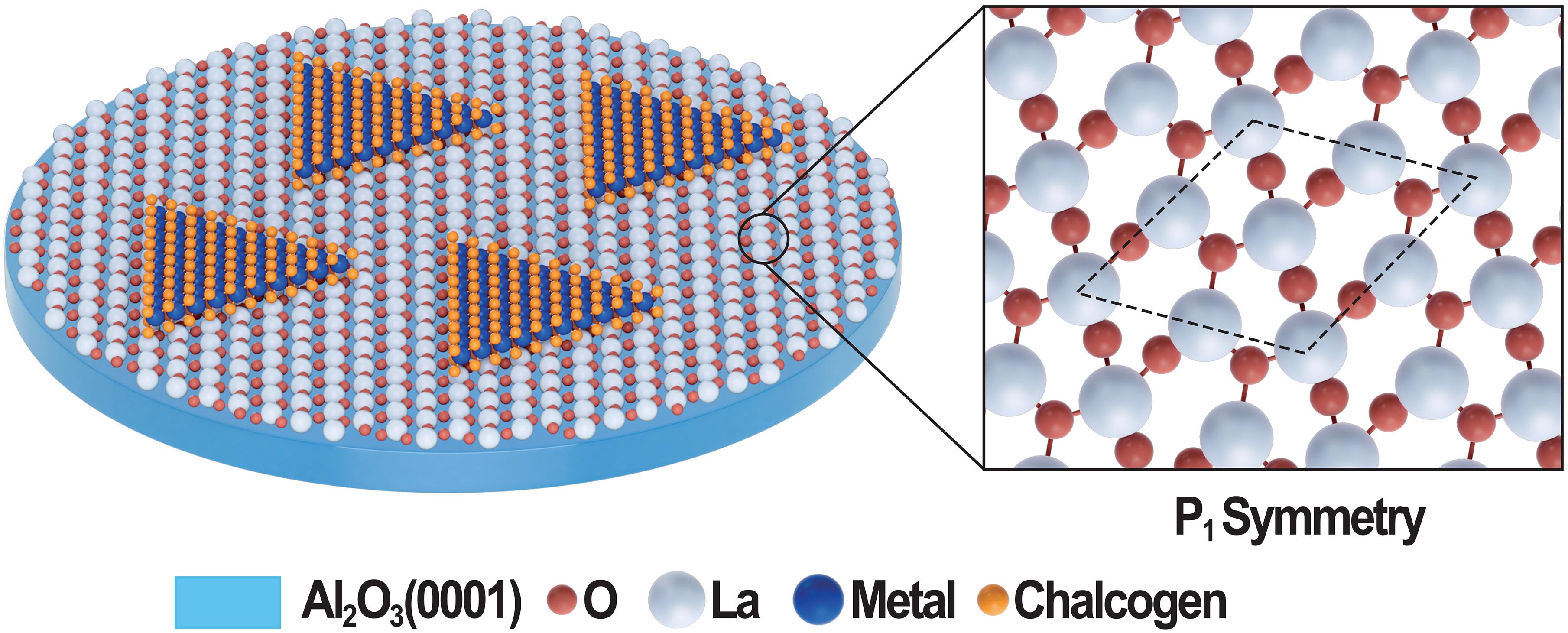镧钝化蓝宝石上过渡金属二硫化物单晶的稳健性外延
IF 45.8
1区 综合性期刊
Q1 MULTIDISCIPLINARY SCIENCES
引用次数: 0
摘要
二维(2D)过渡金属二硫化物(TMDC)半导体是一种很有前途的超硅电子材料,但单晶TMDC的生长仅限于实验室环境中的小晶圆尺寸。我们报道了150毫米单晶TMDC晶片在镧钝化c平面蓝宝石上的外延。镧的单原子层降低了表面对称性,并使反平行畴之间的能量差增加了200倍,导致单向畴对齐。采用化学气相沉积(CVD)和金属有机CVD工艺制备了单晶二硫化钼(MoS 2)、二硒化钼(MoSe 2)、二硫化钨(WS 2)和二硒化钨(WSe 2)。晶圆级光谱和器件测量证明了150毫米TMDCs的卓越质量和均匀性,在室温下,MoS 2和WSe 2的平均迁移率分别为110和131平方厘米/伏/秒。本文章由计算机程序翻译,如有差异,请以英文原文为准。

Robust epitaxy of single-crystal transition-metal dichalcogenides on lanthanum-passivated sapphire
Two-dimensional (2D) transition-metal dichalcogenide (TMDC) semiconductors are promising materials for beyond-silicon electronics, but the growth of single-crystalline TMDCs has been limited to small wafer sizes in laboratory settings. We report the epitaxy of 150-millimeter single-crystalline TMDC wafers on lanthanum-passivated c-plane sapphire. The single atomic layer of lanthanum reduces the surface symmetry and increases the energy difference between antiparallel domains by as much as 200 times, leading to unidirectional domain alignment. We grew single-crystalline molybdenum disulfide (MoS2), molybdenum diselenide (MoSe2), tungsten disulfide (WS2), and tungsten diselenide (WSe2) by means of both chemical vapor deposition (CVD) and metal-organic CVD processes. Wafer-scale spectroscopies and device measurements demonstrate the exceptional quality and uniformity of 150-millimeter TMDCs, with average mobility of 110 and 131 square centimeters per volt per second for MoS2 and WSe2, respectively, at room temperature.
求助全文
通过发布文献求助,成功后即可免费获取论文全文。
去求助
来源期刊

Science
综合性期刊-综合性期刊
CiteScore
61.10
自引率
0.90%
发文量
0
审稿时长
2.1 months
期刊介绍:
Science is a leading outlet for scientific news, commentary, and cutting-edge research. Through its print and online incarnations, Science reaches an estimated worldwide readership of more than one million. Science’s authorship is global too, and its articles consistently rank among the world's most cited research.
Science serves as a forum for discussion of important issues related to the advancement of science by publishing material on which a consensus has been reached as well as including the presentation of minority or conflicting points of view. Accordingly, all articles published in Science—including editorials, news and comment, and book reviews—are signed and reflect the individual views of the authors and not official points of view adopted by AAAS or the institutions with which the authors are affiliated.
Science seeks to publish those papers that are most influential in their fields or across fields and that will significantly advance scientific understanding. Selected papers should present novel and broadly important data, syntheses, or concepts. They should merit recognition by the wider scientific community and general public provided by publication in Science, beyond that provided by specialty journals. Science welcomes submissions from all fields of science and from any source. The editors are committed to the prompt evaluation and publication of submitted papers while upholding high standards that support reproducibility of published research. Science is published weekly; selected papers are published online ahead of print.
 求助内容:
求助内容: 应助结果提醒方式:
应助结果提醒方式:


